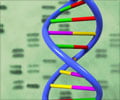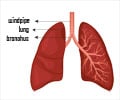Researchers have found that differences in the genetic code of pneumococcal bacteria could be the reason behind their heightened risk children with sickle cell disease.

The results followed whole genome sequencing of hundreds of pneumococcal bacteria collected from the public and patients with sickle cell disease. The genome is carried in the DNA molecule and includes the instructions necessary to assemble and sustain life.
The analysis showed the bacteria have adapted to sickle cell patients, including measures aimed at preventing infection. As a result, disease-causing strains of the bacteria differ in children with and without sickle cell disease. For example, the pneumococcal strains collected from sickle cell patients in this study differed from the 13 pneumococcal strains included in the current vaccine recommended for children age 5 and younger.
"The results help explain why current vaccines haven't been as successful at protecting children with sickle cell disease from pneumococcal infections as they have in protecting other children," said Joshua Wolf, M.D., an assistant member of the St. Jude Department of Infectious Diseases and one of the study's lead authors. The other first authors are Robert Carter, Ph.D., of the St. Jude Computational Biology department, and Tim van Opijnen, formerly of Tufts University School of Medicine, Boston, and now of Boston College.
Work is already underway on vaccines that take a different approach to priming the disease-fighting immune system to protect high-risk groups, including children with sickle cell disease, said the study's corresponding author, Jason Rosch, Ph.D., an assistant member of the St. Jude Infectious Diseases department. "These results will help guide vaccine design going forward," he said.
Sickle cell disease is caused by an inherited mutation in the gene that carries instructions for making hemoglobin. That is the protein red blood cells use to carry oxygen. The mutation leaves red blood cells prone to the sickled shape that gives the disease its name and is also responsible for the episodes of intense pain, organ damage and other problems associated with the life-shortening disease. About 300,000 infants are born with sickle cell disease each year, making it the world's most common genetic disorder.
The analysis revealed that over time, the genomes of bacteria isolated from sickle cell patients shrank as genes and the corresponding DNA were discarded or combined. A comparison of the bacterial genomes from individuals with and without sickle cell disease suggested the changes reflected bacterial adaptation to their sickle cell host and contributed to the bacteria's ability to persist despite advances in preventive care.
When researchers checked those same genes in bacteria isolated from sickle cell patients, they found six that were missing or altered in a significant percentage of samples. The list included genes involved in transporting iron into bacteria, bacterial metabolism and other processes that are likely altered in patients with sickle cell disease.
"We demonstrated that genes necessary to cause disease in the general public are expendable in patients with sickle cell disease," Rosch said.
The same methods used in this study could also be used to better understand the genetics behind other pneumococcal high-risk groups, including in individuals who are past retirement age or are obese.
Source-Eurekalert
 MEDINDIA
MEDINDIA


 Email
Email







